How to Grow a Flower Container Garden for Beginners
Are you new to gardening and want to start slow? Do you only have a small garden area to work with? If so, flower container gardening is a great option. I’ll share my tips and tricks on how to grow and care for a beautiful flower container garden.
Container gardening is a great way to add a splash of color to your outdoor space when the garden’s perennial plants have yet to bloom. These gorgeous containers filled with bright blooms provide instant color in the garden and are a great focal point early in the season.
Adding flower containers is also a perfect solution for gardeners with limited space or for beginning gardeners.
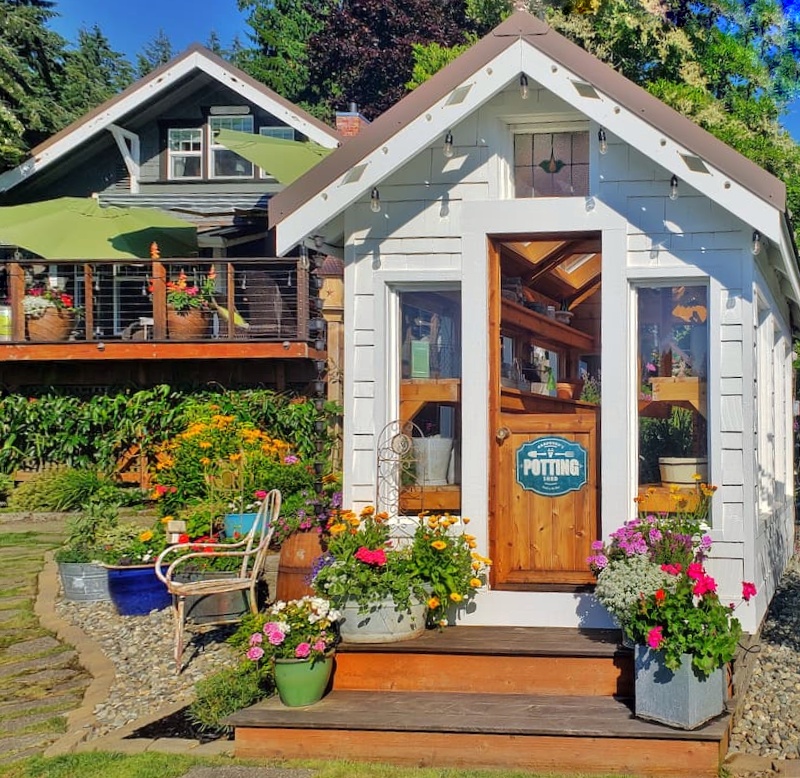
As an Amazon affiliate, I earn a commission from qualifying purchases at no additional cost to you. My blog also features other affiliate links for your convenience. Click here to read my privacy policy.
What is a Flower Container Garden?
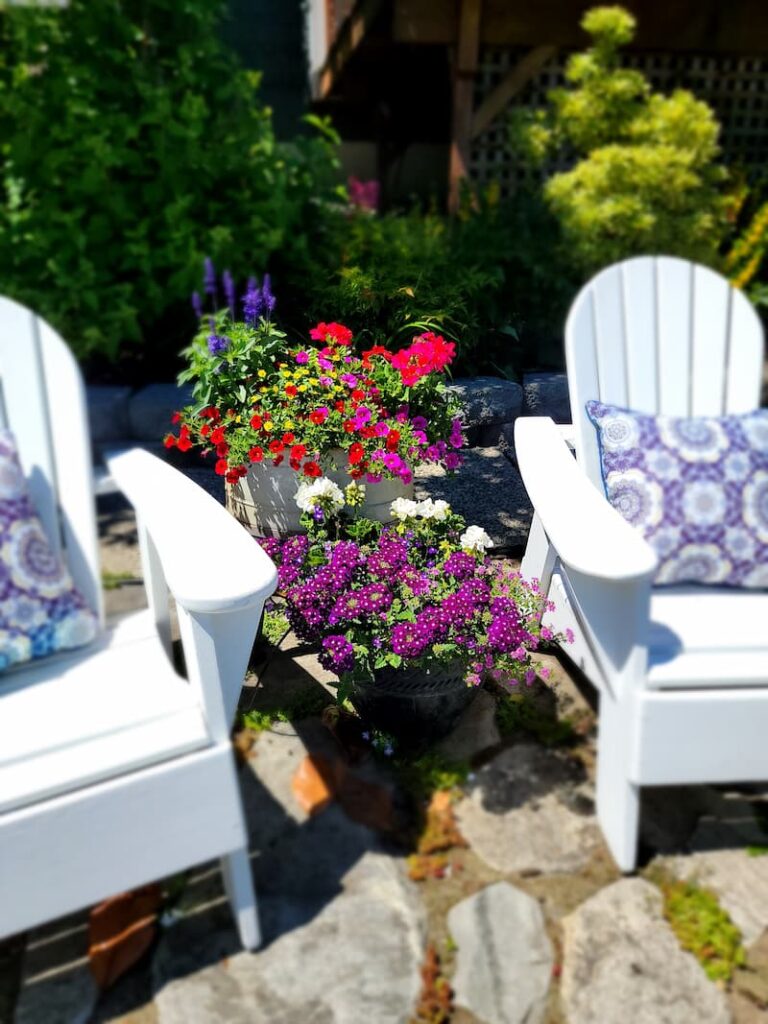
A flower container garden is a type of gardening that involves using containers or pots to grow different types of flowers. There are a variety of different containers, such as terra cotta, ceramic, or plastic.
Container gardening is a great way to add color and interest to small spaces such as balconies, patios, or decks.
A beginning gardener may find flower container gardening less overwhelming when starting out. It’s easier to control watering, soil quality, and other care needs and maintenance flowers need.
Reasons to Grow a Container Garden
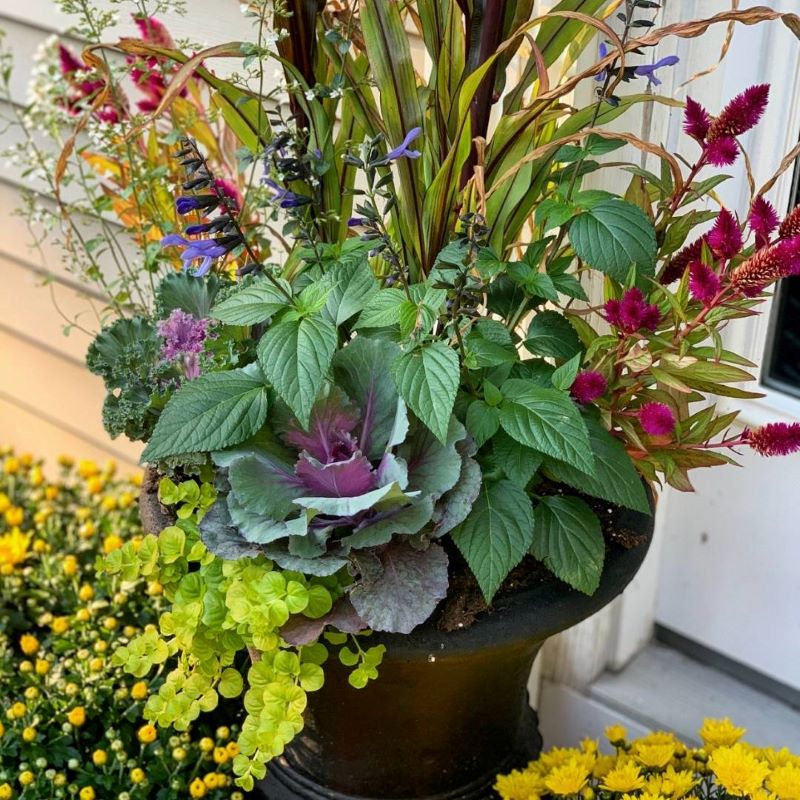
There are several reasons why growing a container garden can be a great choice. Here are some of the key benefits:
Garden Space Limitations
Container gardening is ideal for people with limited space, such as those living in an apartment, condo, or house with small years.
It allows you to make the most of your available space, whether a balcony, patio, or even a sunny windowsill.
Easy to Learn
If you’re new to gardening, container gardening allows you to start small and gradually expand your garden as you gain experience and confidence.
Reduced Maintenance
Container gardens generally require less maintenance compared to traditional gardens. Weeding is minimal, and soil-borne diseases are less likely when using potting soil.
You can water and fertilize containers more efficiently as well.
Flexibilty & Moblity
Container gardens offer flexibility to move around to optimize sunlight exposure or rearrange them for aesthetic purposes.
This increased mobility option is especially useful if you’re renting or planning to move. You can take your garden with you.
Accessibility
Container gardens are accessible to people of all ages and abilities. They can be positioned at a comfortable height, making gardening tasks more manageable and reducing the need to bend or kneel.
Season Extension
Containers can be moved indoors during colder months, allowing you to extend the growing season and continue gardening year-round.
This benefits growing herbs, salad greens, or certain vegetables that thrive in cooler temperatures.
Control Over Growing Conditions
With container gardening, you have more control over the growing environment.
You can choose the ideal soil mix for your plants, adjust watering and fertilizing routines to meet specific needs, and position the containers to maximize sunlight exposure.
Tips for Planting Beautiful Flower Container Gardens
1. Choose the Best Flowers for Container Gardens
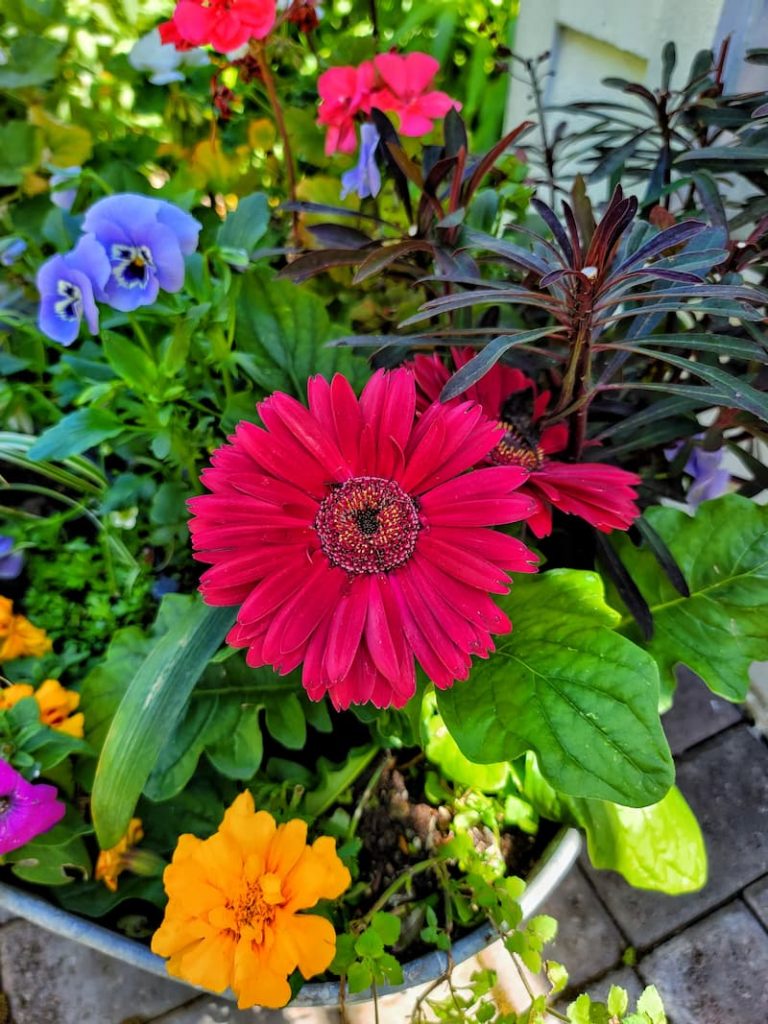
Before you choose your flowers or container, consider the types of plants that will thrive in the growing season and the outdoor area where you will grow them.
How much sunlight and water your plants require is essential information when choosing plants for your containers.
2. Pick Plants for the Right Lighting Conditions
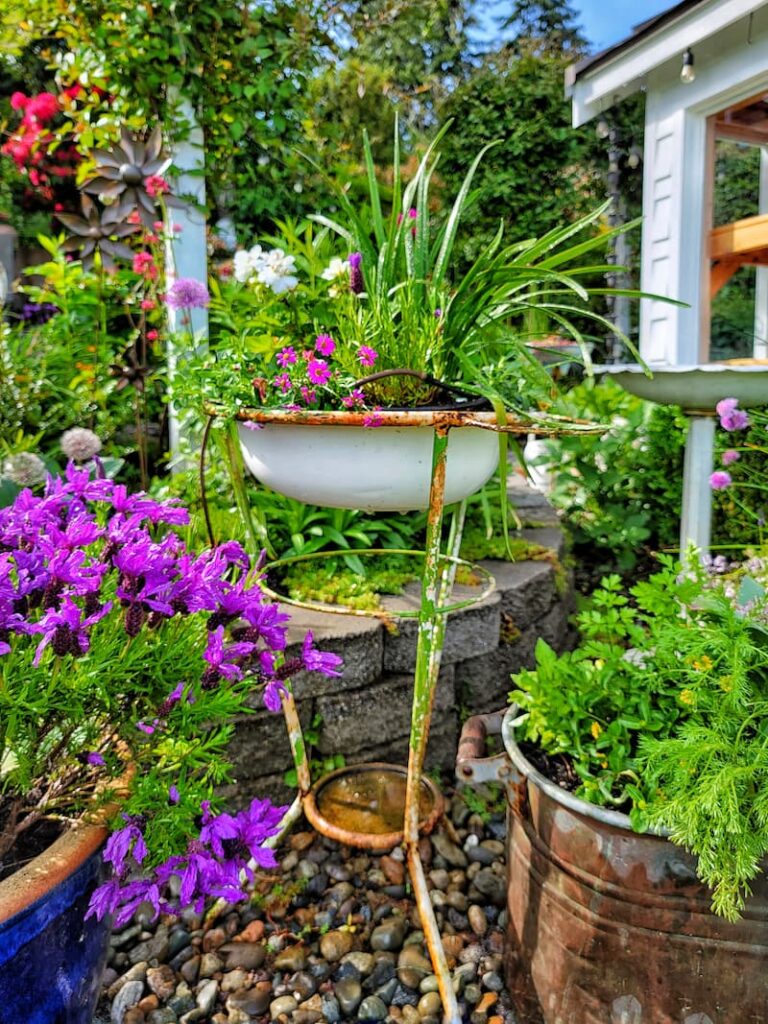
When selecting your plants, read the plant tags or labels to determine whether they grow best in sun or shade.
Mixing sun and shade-loving flowers in the same container is not a good idea.
Sun-Loving Annuals
Many sun-loving annual flowers are perfect for adding color to your garden or containers. Here are some ideas:
Shade-Loving Annuals
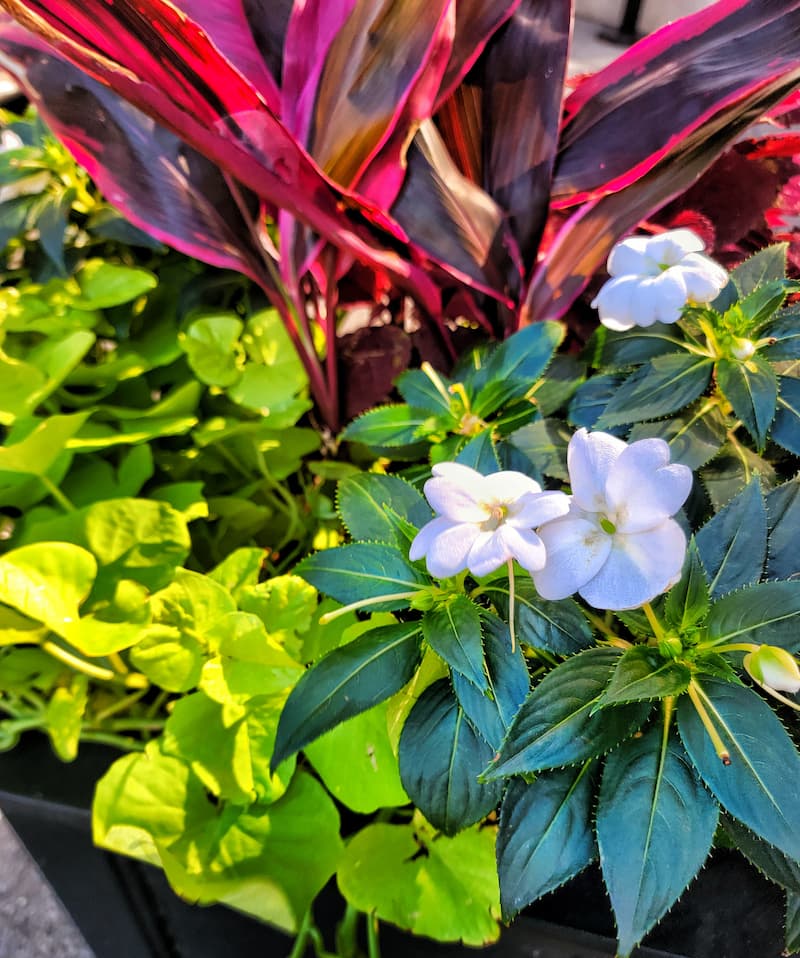
If you have a shady garden spot that doesn’t get direct sunlight, plenty of annual flowers can thrive in those conditions. Here are some shade-loving options:
3. Choose the Best Containers for Container Gardening
Container Options
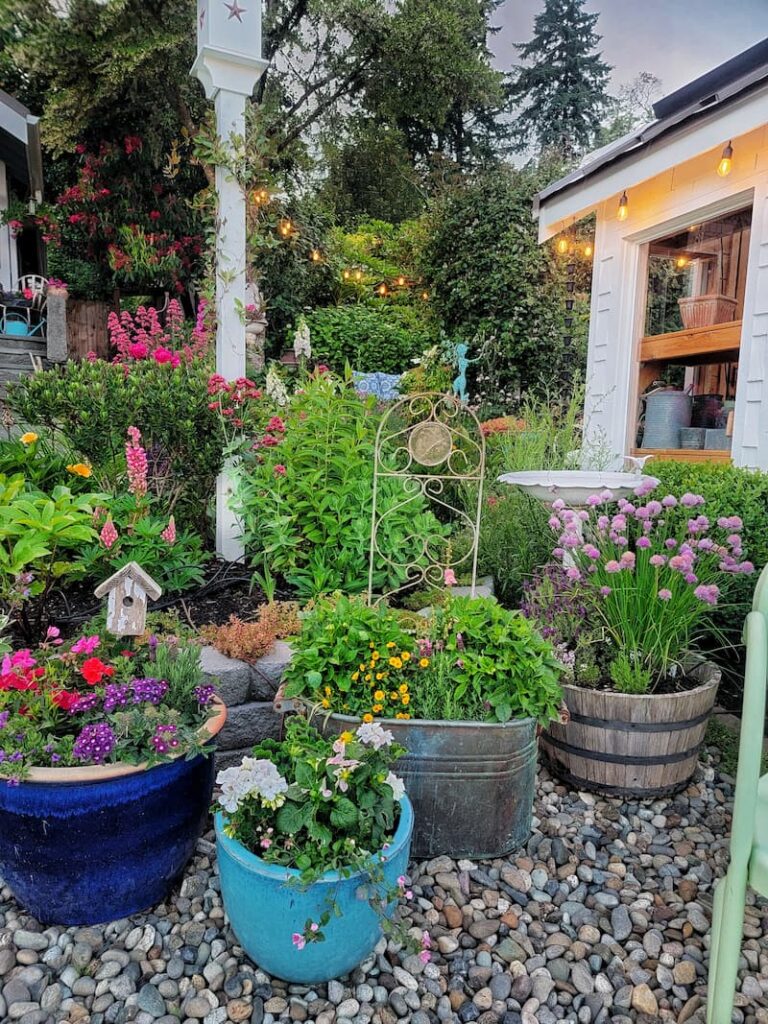
When choosing a container for your flower garden, the opportunities are endless.
Keep these things in mind when choosing a container…
Galvanized tubs and buckets, barrels, window boxes, concrete containers, and terra cotta pots are all great options.
Drainage
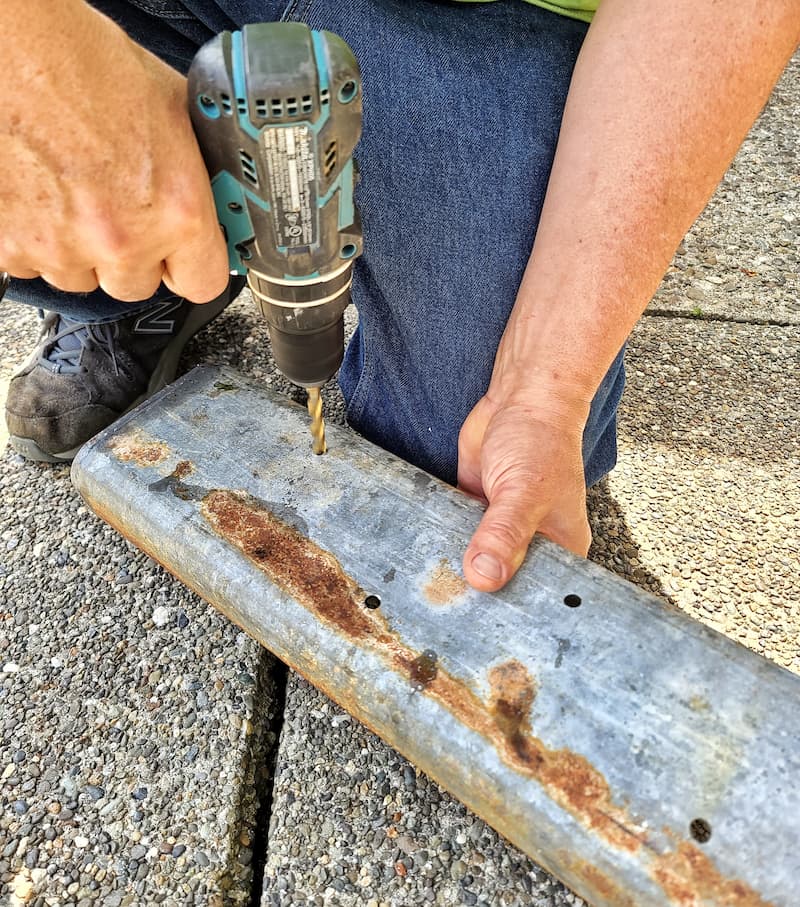
Proper drainage is essential for all garden containers, so make sure they have drainage holes on the bottom.
There’s a myth that you should put gravel or rocks in the container before adding dirt, but after doing more research, I found that this could hurt the plants by blocking the water from draining through the container.
If your pot or container doesn’t already have drainage holes, you will need to drill some yourself. The minimum hole should be 1/2″ in diameter for a small or medium pot and 1″ for a larger one.
Tips for Filling Large Planters
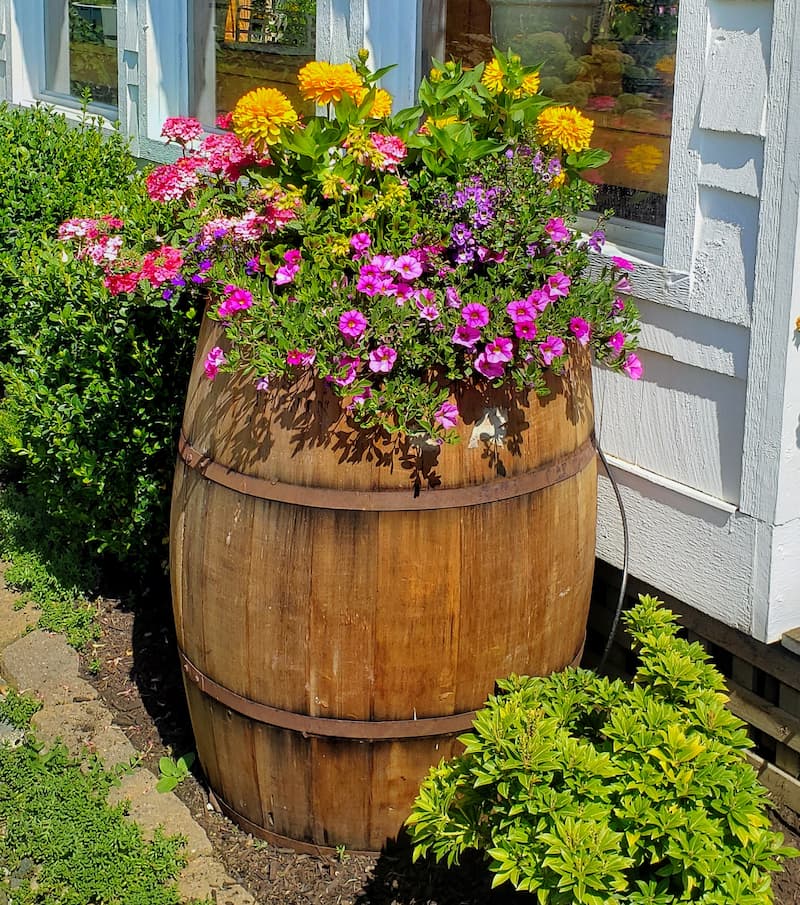
Some large containers are deep, and filling them with dirt will make them heavier to lift and require more dirt than you probably want to use.
There are several options to reduce the potting soil you need to fill the container.
4. Tips for Container Flower Combinations
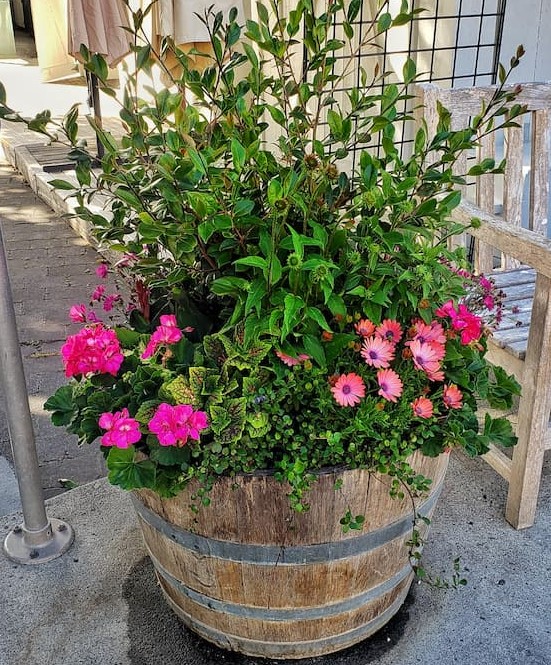
For a beautiful flower container, use a tall, showy plant (thriller), a bushy, medium-sized plant (filler), and a trailing plant (spiller).
For the right flower-growing combination, ensure all the plants have the same light and water requirements.
Thrillers
A thriller plant has height and is the “attention-getter” of any flower container.
It’s the framework for the entire flower garden container. They’re usually tall upright plants with colorful foliage or dramatic show-stopping flowers that last all season.
Use at least one thriller plant in a container. If you can see all sides of the container, plant it in the center with the other plants placed around it. If the back of the container is up against something and not showing, plant the filler towards the back of the container.
Thriller options include:
Fillers

A filler plant is a flowering plant or foliage that compliments the thriller but doesn’t overwhelm it.
These plants will add color and mass overall, creating a textural and colorful contrast. They tend to have smaller leaves and flowers. Their purpose is to fill the container arrangement throughout the season.
Try to use fillers between 1/3-2/3 the size of the thriller plant and that contrast in color, texture, and shape.
Filler options include:
Spillers
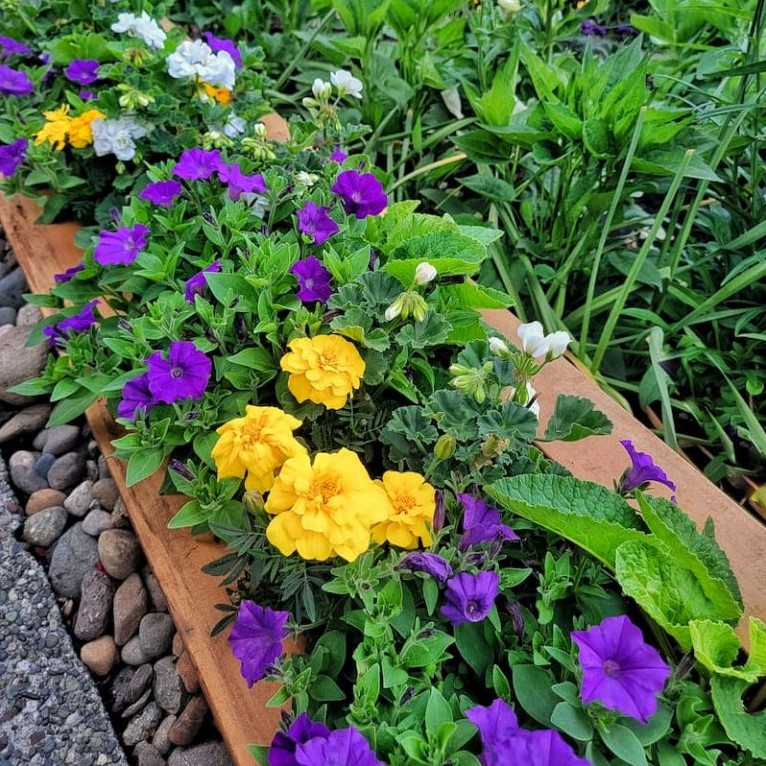
A spiller is the anchor for the container and is planted last.
These are trailing plants that spill over and out of the container and should be planted close to the edge. If the container will be seen from all sides, the spillers should also be planted on all sides. If the container will be viewed from only one side, these plants can be planted in the front of the container.
Spiller options include:
Other Tips on Planting Flowers and Herb Containers
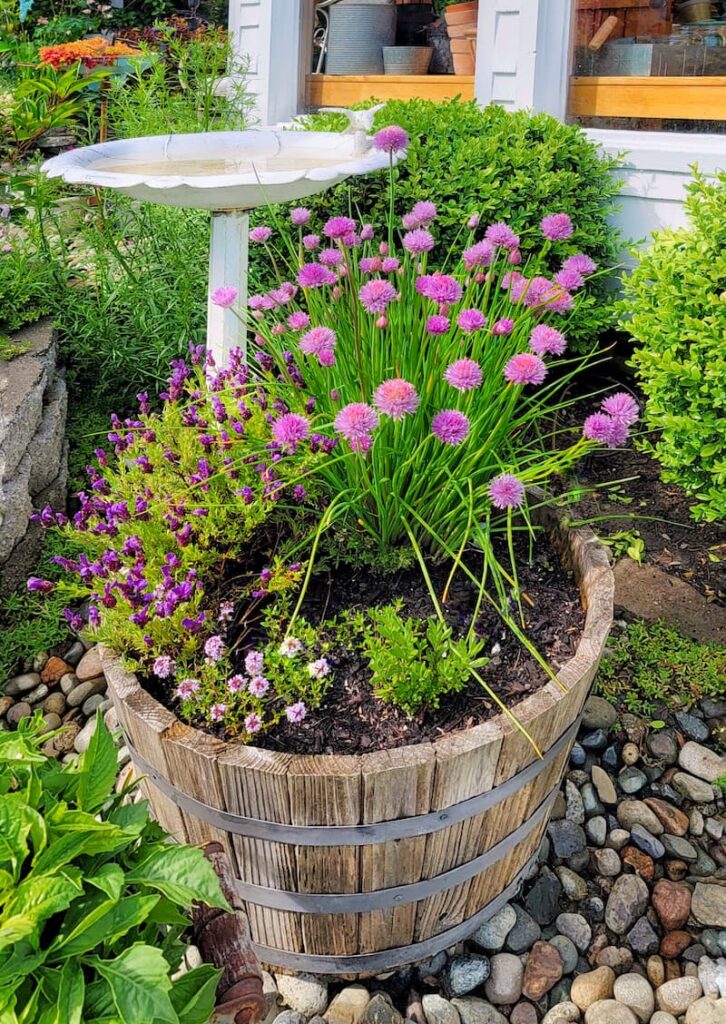
Consider the size and shape of the root system when planting the flowers and plants that will go into your containers. If there isn’t enough room for a plant’s roots and it becomes rootbound, it will probably dry out quicker than you can water it.
Make sure your mix of plants all needs the same light, water, and care. Shade-loving impatiens will probably not do well in the same container as a petunia that needs full sun.
I usually use 5 or 6 plants for an 18″-24″ container when planting herbs.
5. Harden Off Your Plants
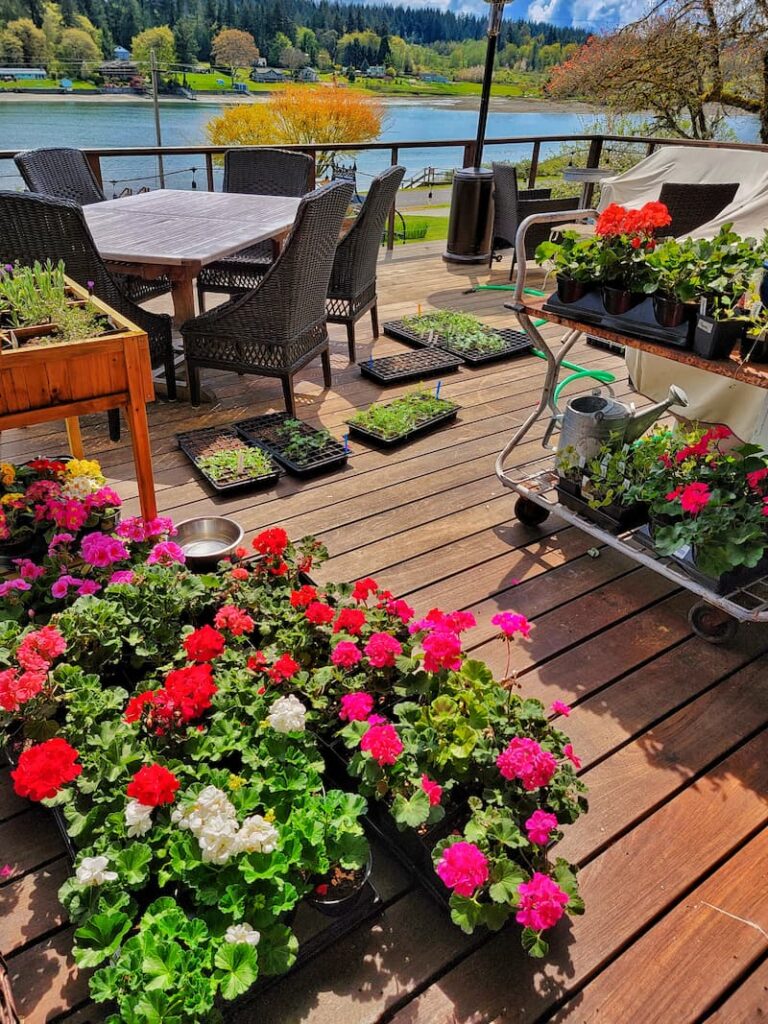
Hardening off your plants will ensure they are acclimated to the outdoor elements. This is the process of introducing the plant to more extreme weather temperatures, wind, sunlight, and overall exposure to the outdoor elements.
If you are buying your plants from a nursery or garden center, ask them if their plants have been acclimated to the outdoor elements.
6. Soil Conditions for Flower Container Gardens
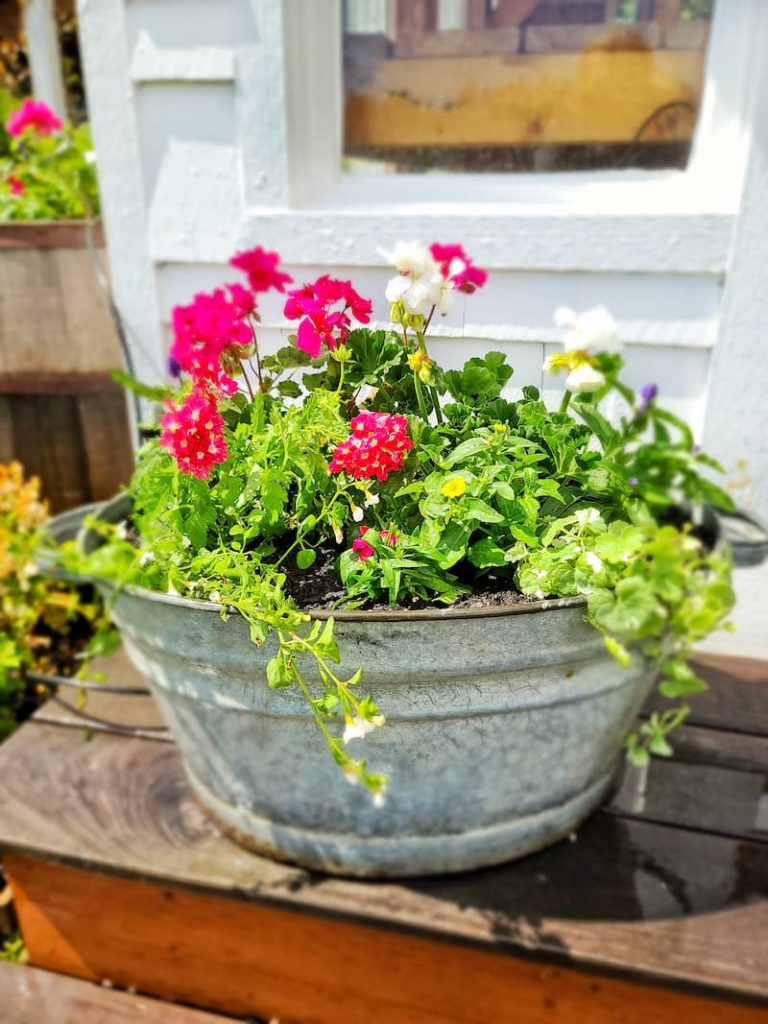
Use pre-moistened quality soil for your containers, and feed your soil with slow-release fertilizer when planting your annuals.
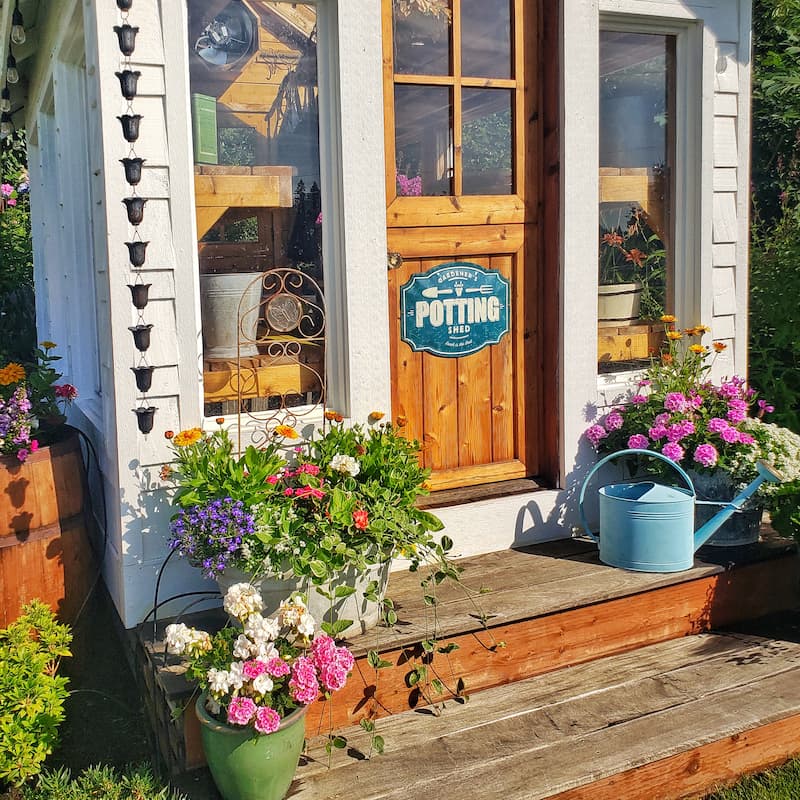
You can also fertilize every week or two with a liquid fertilizer like a fish emulsion seaweed blend.
Your potting soil should include organic matter such as compost. I add a layer of fish compost to my containers every year to feed my plants, retain moisture, and give them a nice appearance.
7. How to Space Plants in Flower Container Gardens
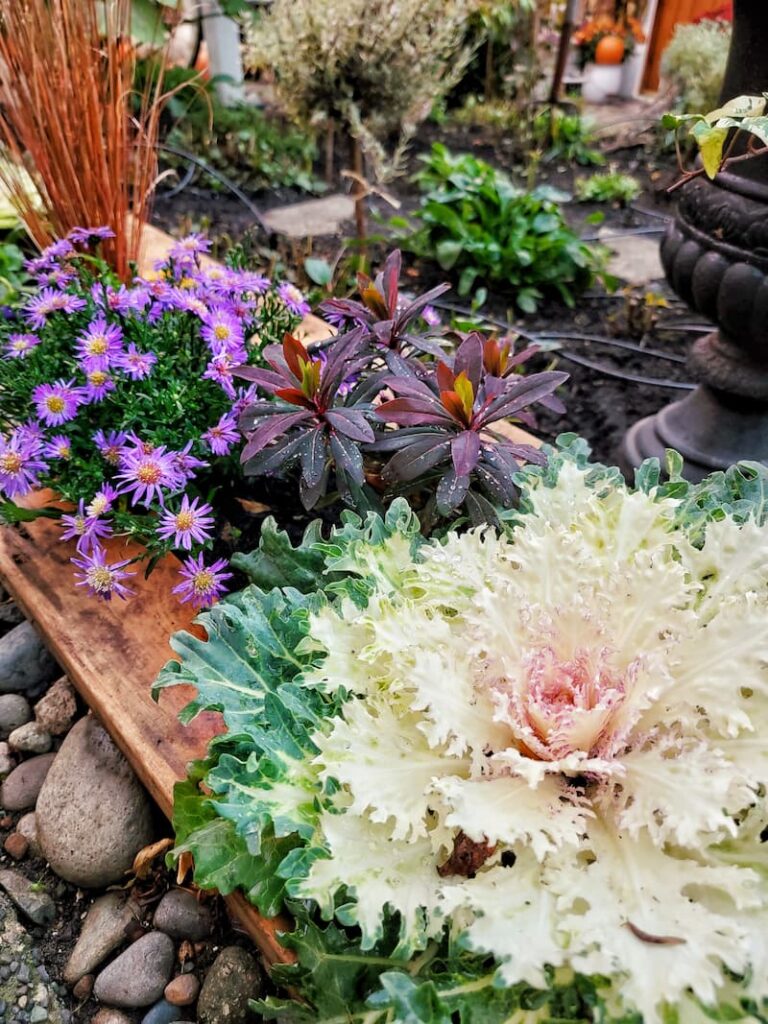
There are usually spacing guidelines on the plant labels, but I tend to break those rules when it comes to container gardening. I look forward to the flowers filling in as quickly as possible.
Have I gone overboard a few times? Of course, but not very often. If the container does get too crowded, you can prune the plants back or remove a plant or two and move them to another flower container.
You still want to provide air circulation to prevent pests or diseases in your flower containers.
8. Watering Your Flower Container Garden

Container plants require more frequent watering than those growing directly in the garden. Water whenever the soil surface feels dry to the touch.
During hot, sunny periods you’ll most likely have to water them every day. This is especially important for hanging baskets that dry out faster because they are buffeted by the wind.
Consider installing a drip irrigation system with a timer that automatically waters your plants daily.
Landscape fabric is a great option to control excess water and promote proper drainage.
9. Prune to Remove Faded Blooms

Both annual and perennial flowers need their old, faded blooms removed regularly. This process is called “deadheading,” which will encourage new blooms to be produced and keep the plant from getting too leggy.
Clip away the spent flower heads with your fingers or pruning shears on larger varieties of plants, such as geraniums.
10. Renew and Replace
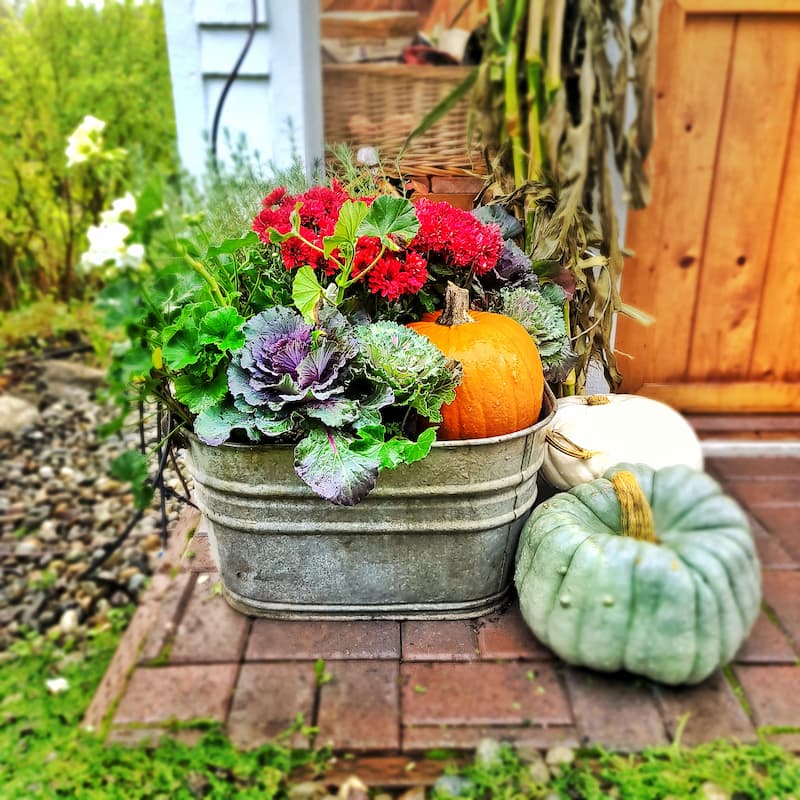
Some annuals and perennials will begin to look tired by late summer no matter how much you take care of them. Remove the spent plants from the container and replace them with another plant.
11. Clean Up Your Flower Container Garden Before Winter
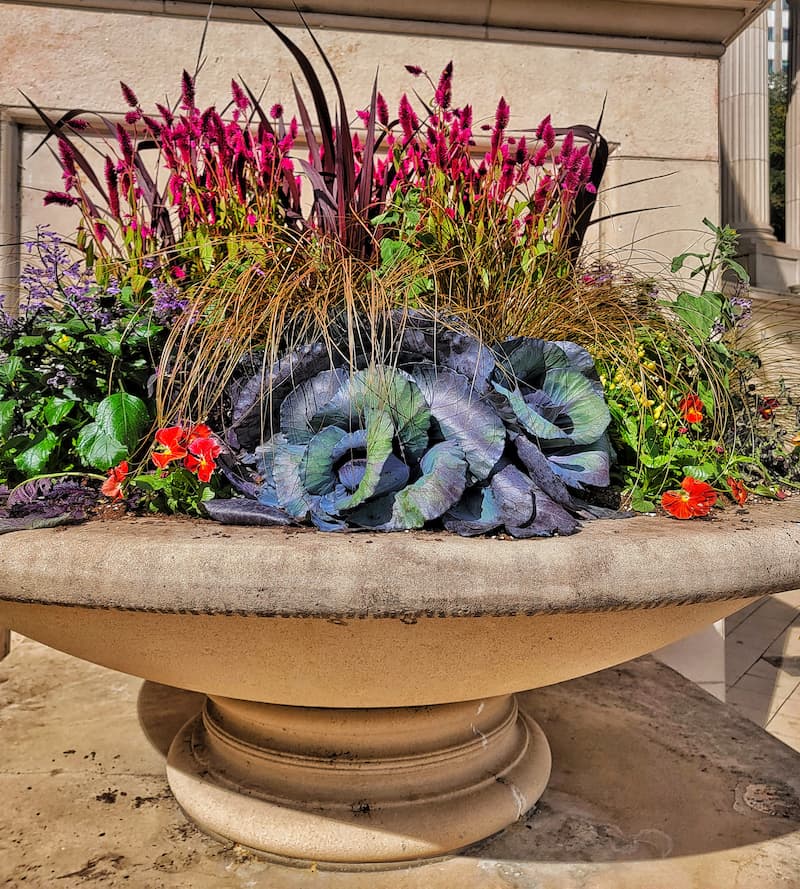
Once your annual flowers have died back, throw them in your compost pile and empty your containers. Ceramic and terra-cotta pots can crack if left outdoors over the winter with soil in them, so store them indoors to avoid damaging them.
If you want to save any perennials or roses growing in containers, plant them directly in the garden before the frost.
Common Questions About Growing a Flower Container Garden
When Should I Start My Container Garden?
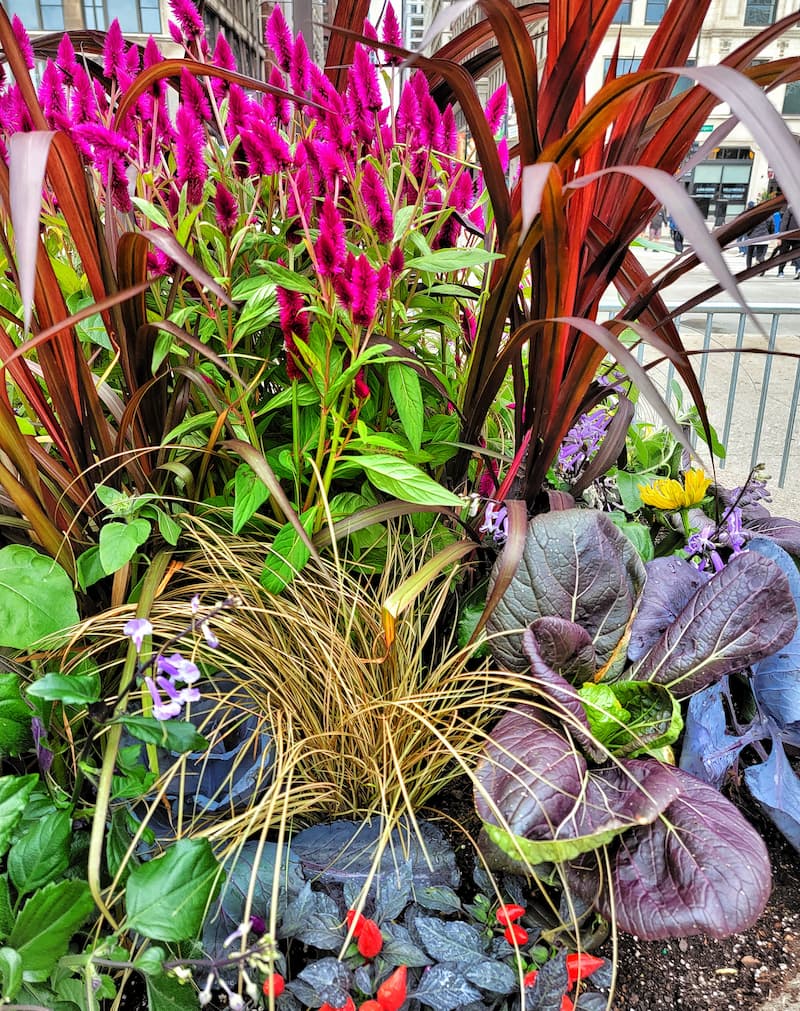
The best time to start your flower container garden depends on the type of flowers you want to grow and your climate. Some flowers, such as pansies and snapdragons, can tolerate cooler temperatures and can be planted in the early spring.
Others, like petunias and marigolds, prefer warmer temperatures and can be planted after the last frost date in your area.
How Many Flowers Should Be Planted in a Container?
The number of flowers that should be planted in a container depends on the size of the container and the type of flowers being planted. As a general rule, it’s best to follow the “thriller, filler, spiller” approach. For smaller containers, one thriller plant, two or three filler plants, and one spiller plant should be a perfect combination
Where Do I Put a Container Garden?
When deciding where to put a container garden, knowing the specific needs of the plants you want to grow is important.
Most plants require six hours of sunlight daily, so choose a location that receives the proper lighting.
Make sure your flower container garden has access to water and is located where it won’t be damaged or knocked over.
Why You Should Grow a Container Garden?
Growing a flower container garden has many benefits.
It allows you to enjoy beautiful flowers even if you have limited space or live in an apartment or urban environment.
Container gardening is a great way to add color and interest to patios, balconies, and other outdoor living spaces.
Garden therapy reduces stress and anxiety.
Whether you’re an experienced gardener or a beginner, a flower container garden is a great way to enjoy beautiful flowers in a small space.
Should I Use Perennials Flowers For Container Gardening?
Perennial flowers come back year after year and require less maintenance than annuals.
However, it’s important to choose the right perennials for your container and growing conditions. Some perennials, like daylilies and hostas can grow too large to be in a small container. Others, like coneflowers and black-eyed Susans, are good choices for container gardens.
Look for varieties compatible with the sunlight and moisture in your growing area.
Can I Mix Herbs and Flowers in a Container Garden?
Mixing herbs and flowers in a container garden can be a great way to create a pretty and functional container garden.
When choosing plants, look for herbs and flowers that have similar growing requirements and visually complement each other. Be careful that they will not overcrowd each other in the container or pot.
Final Thoughts

Container planting ideas are endless, and there are so many beautiful flowers and edible plants you can grow in outdoor planters or balcony container gardens.
You can visit garden centers or local nurseries for more container garden ideas specific to your hardiness zone.
A flower container garden is a great place for beginner gardeners to start and can provide instant color to your outdoor space.
If you have any questions or additional suggestions, please share them in the comments below. And be sure to share this blog post link with anyone who may find these gardening tips useful.
Until next time,
Happy Container Planting!

I’m a self-taught hobby gardener. Everything I share on my blog is my opinion and what has worked for me.
Follow Me for More Inspiration
Shop my Amazon Storefront, LTK sources, and my favorite home decor, garden, and lifestyle products. When you purchase from one of my links, I earn a small commission, which helps me continue sharing all the content you expect on my blog.
Be sure to follow me on Pinterest, Instagram, Facebook, TikTok and LIKEtoKNOW.it. Do you like gardening? Join my Facebook Gardening Tips & Tricks group.



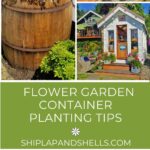
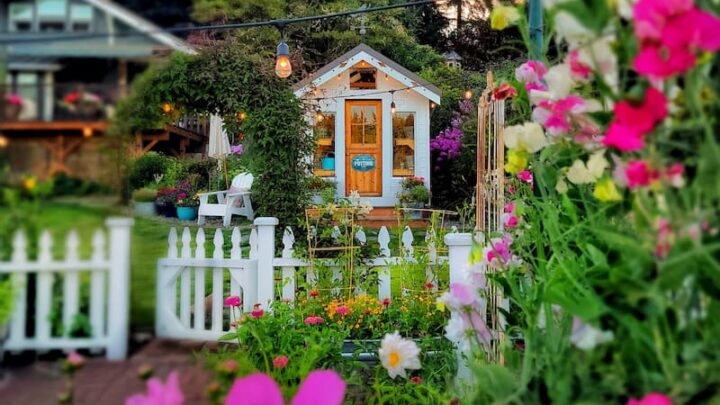
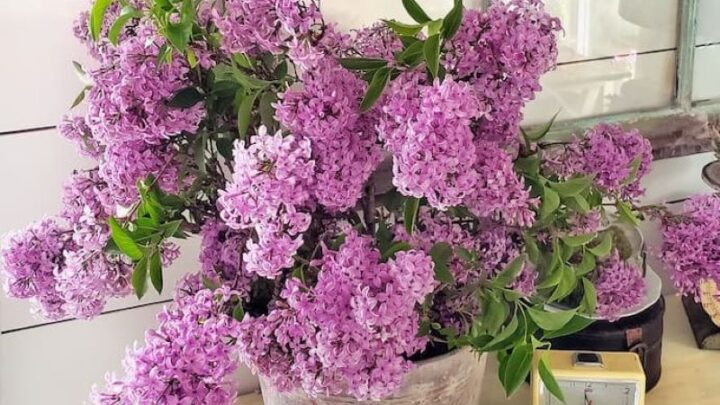
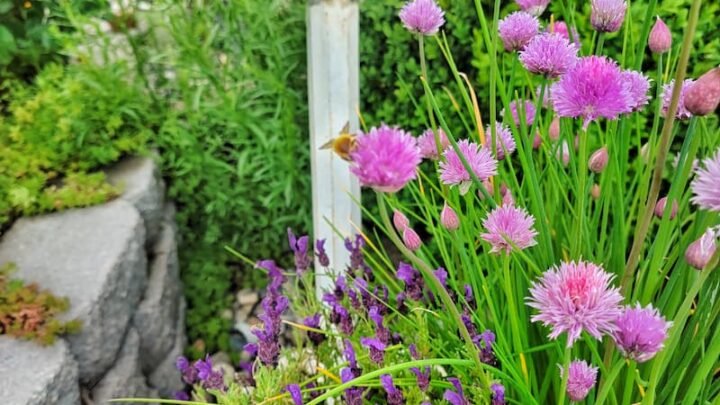
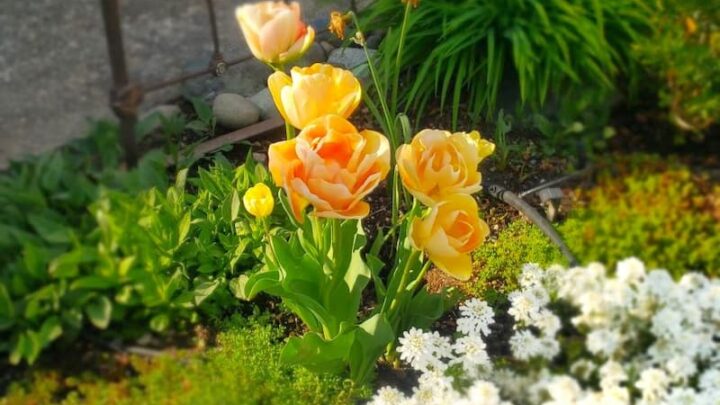
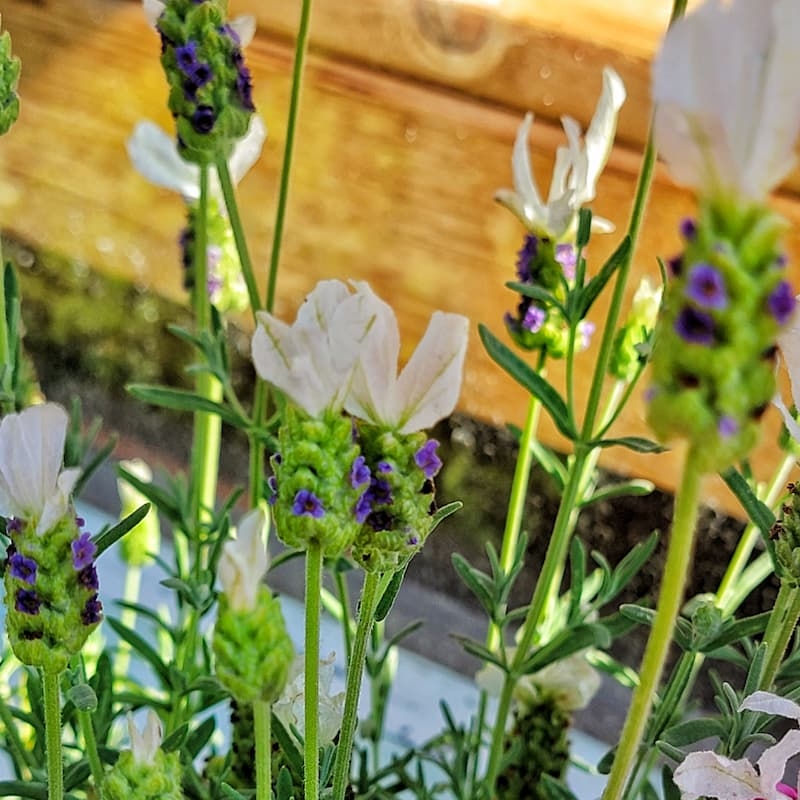
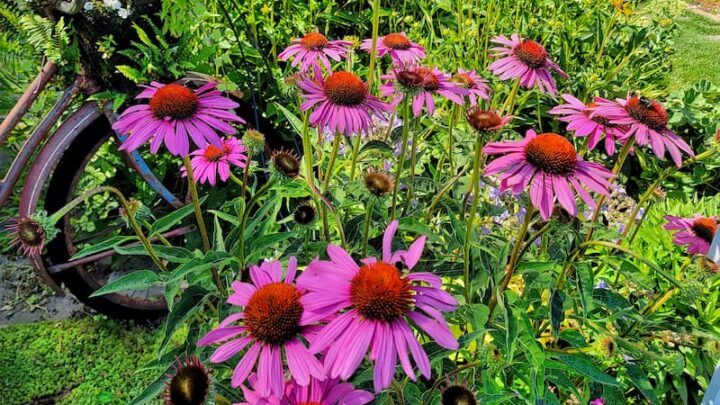
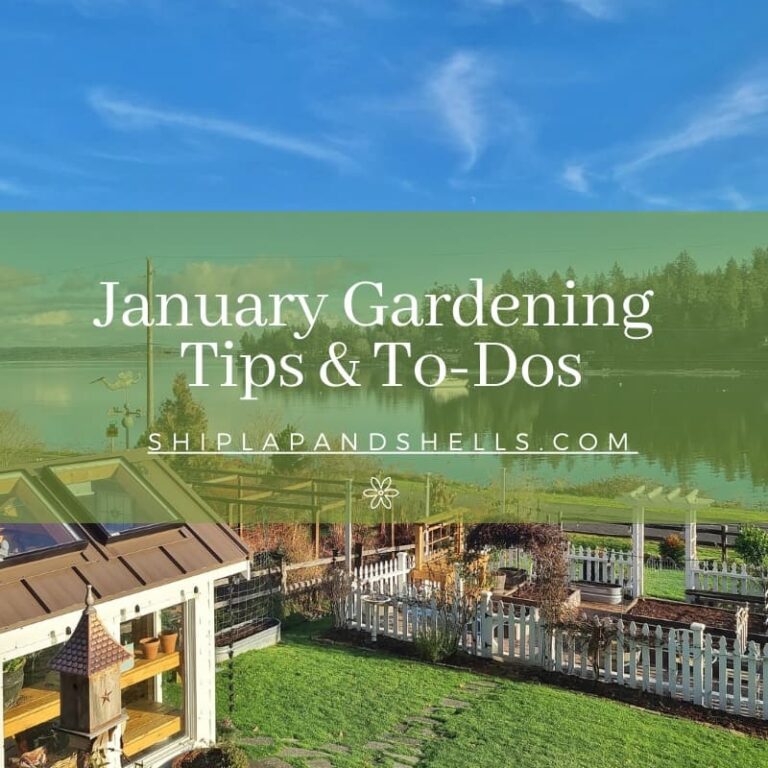
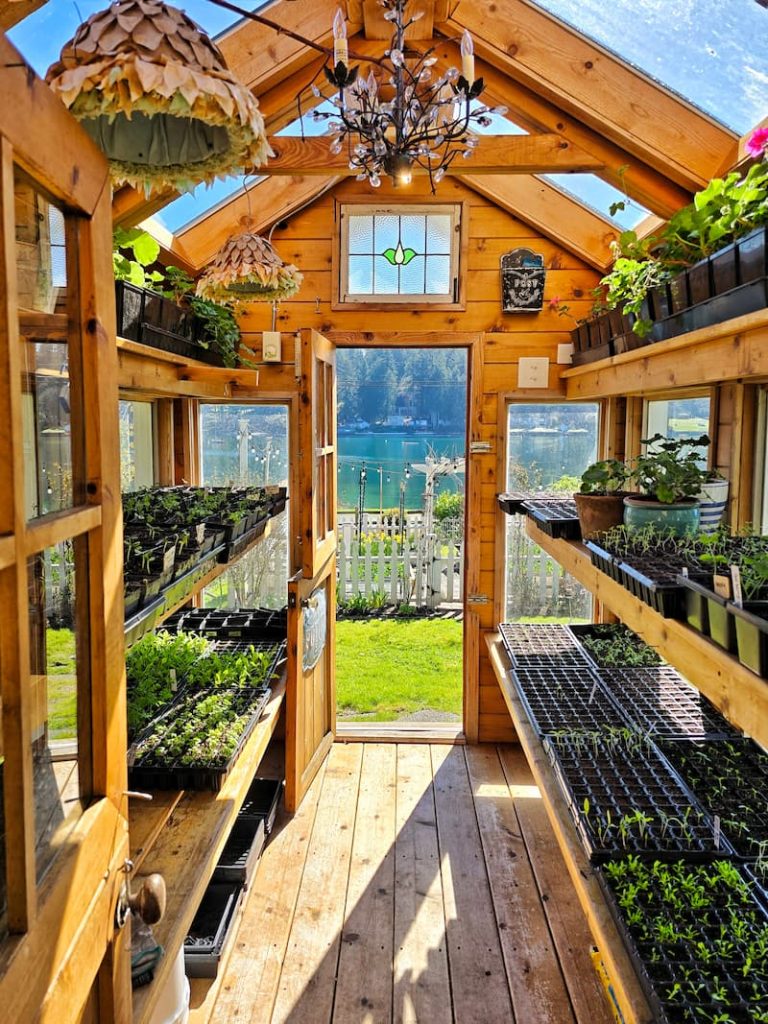
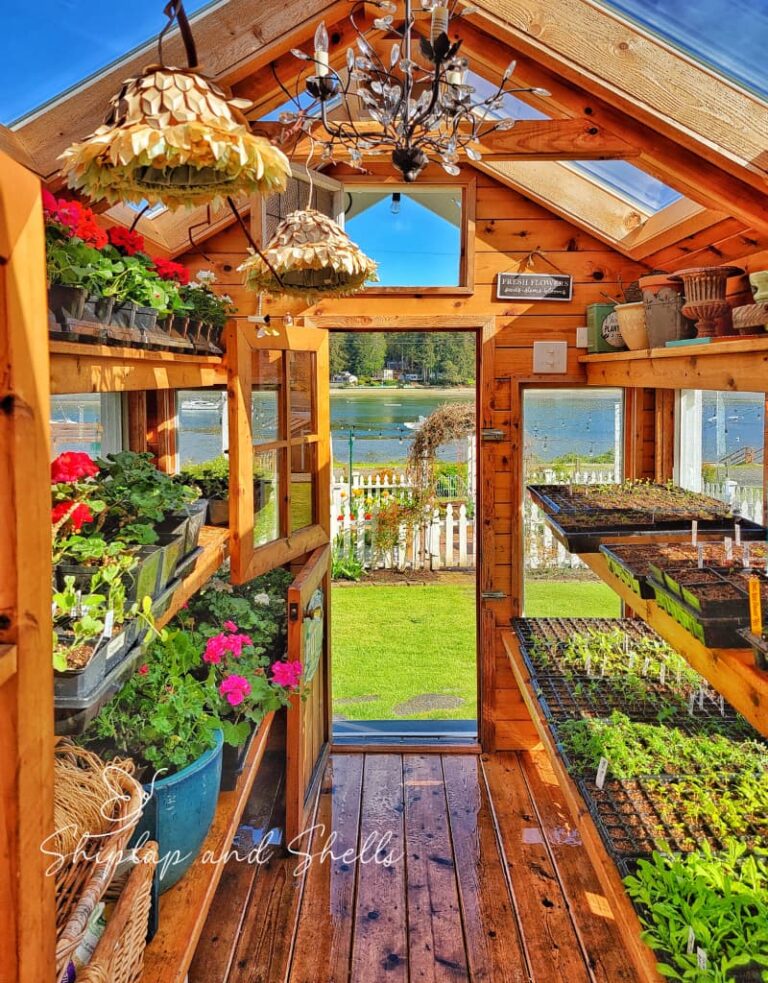
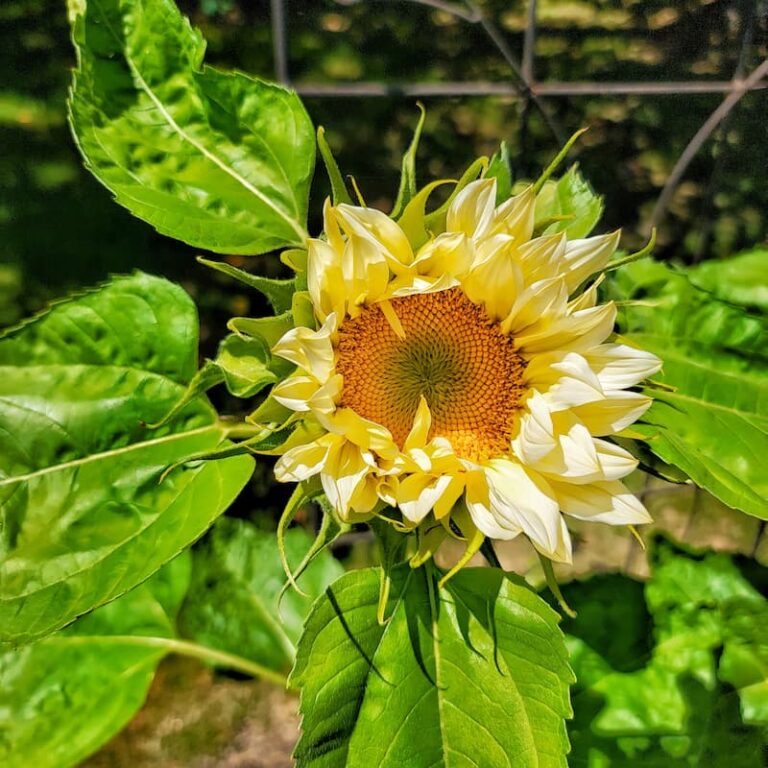
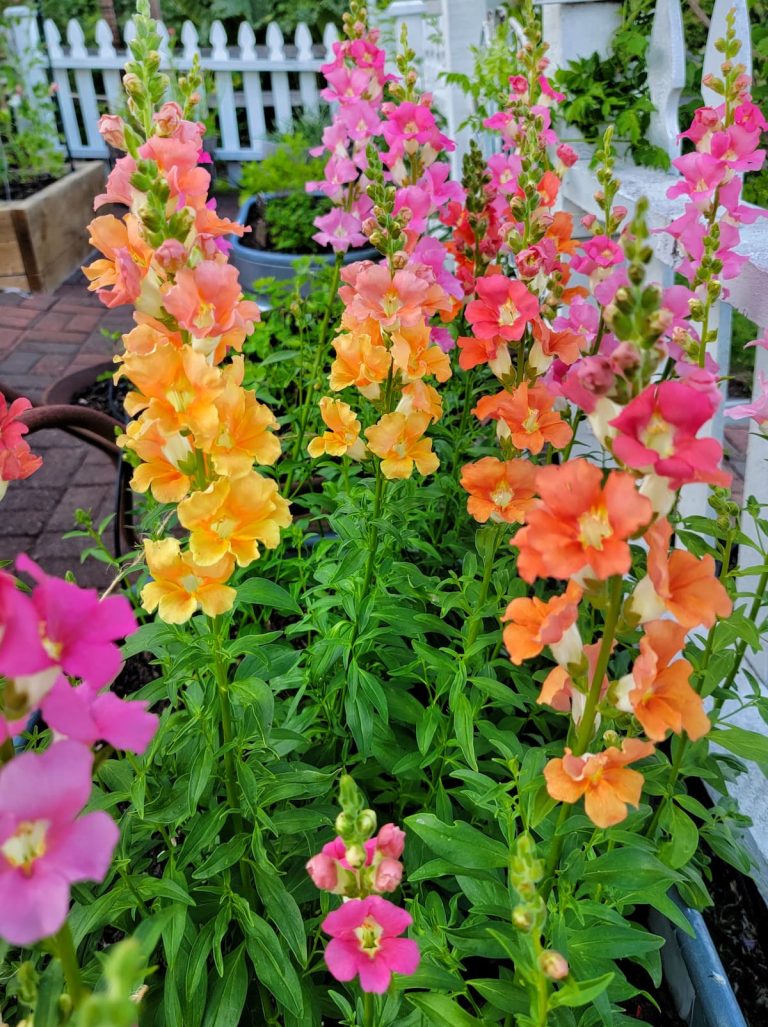
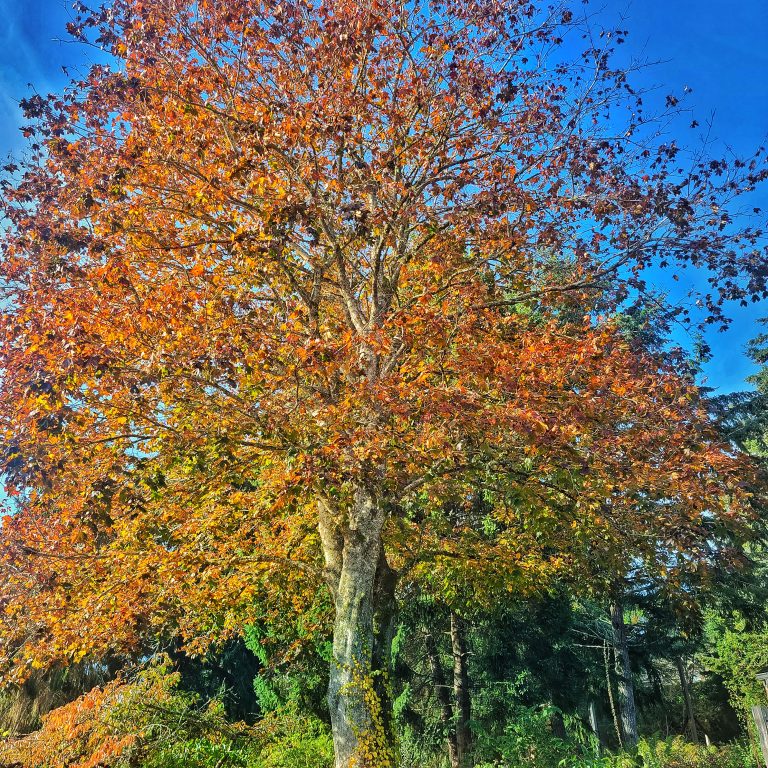
Please delete my photo from this post or give me proper credit.
Thanks so much for stopping by Stacy! I would love to help you out with this but I can’t seem to find the photo in question. I have gone through them all. Can you please let me know which one it is so I can address it? I’d love to take care of this issue for you!
Your container gardens look so pretty kim! Thanks for the great tips!